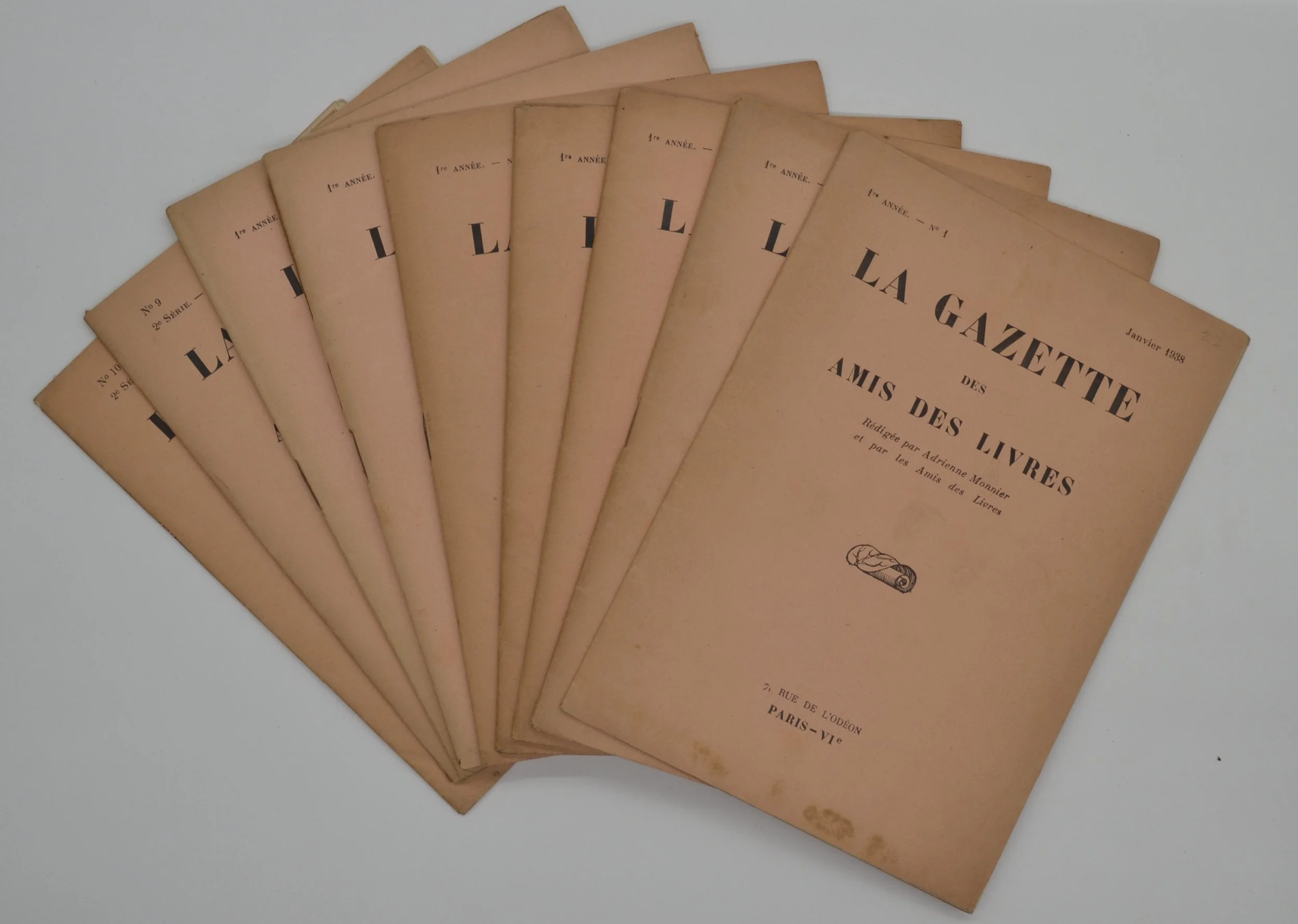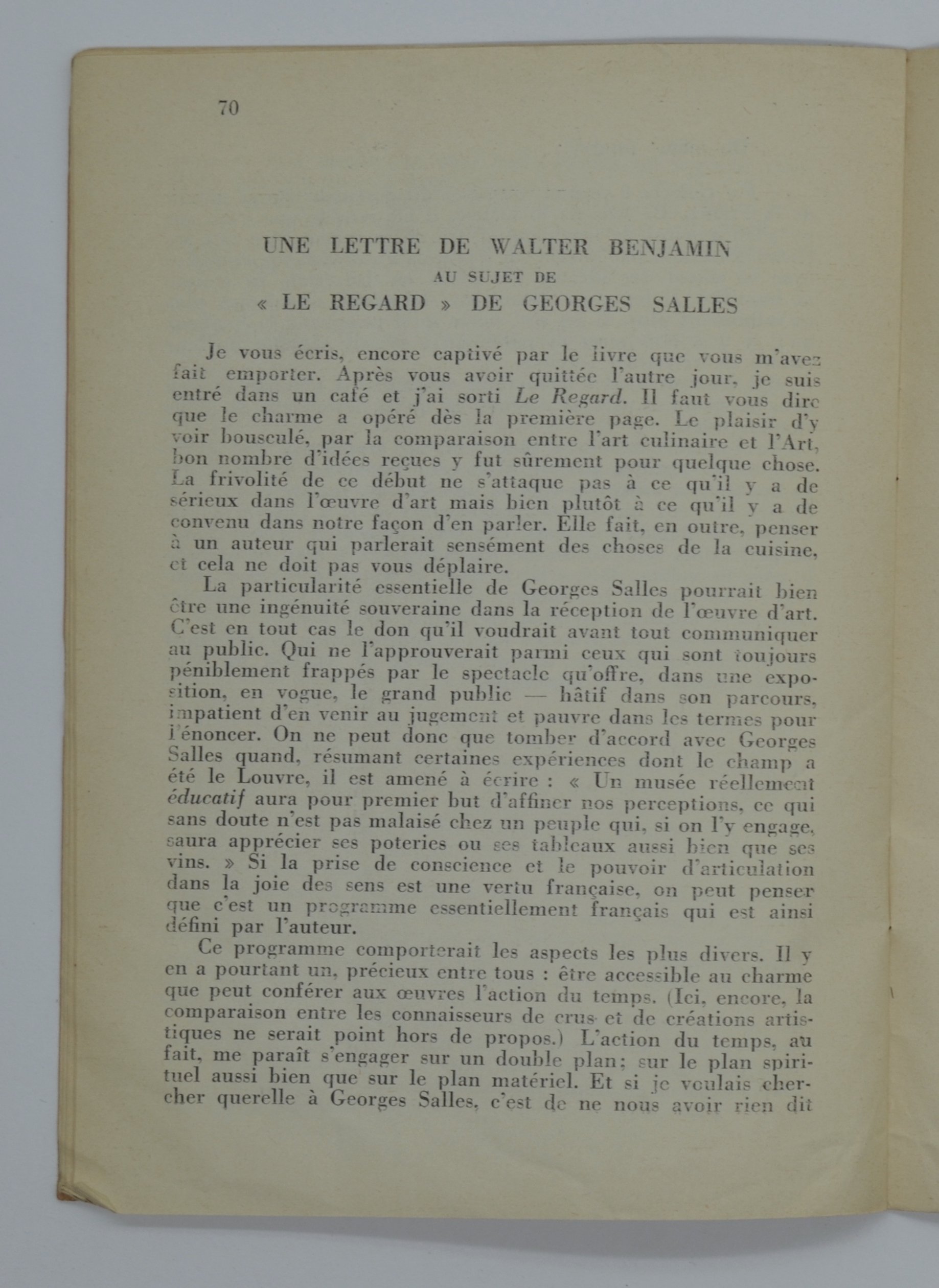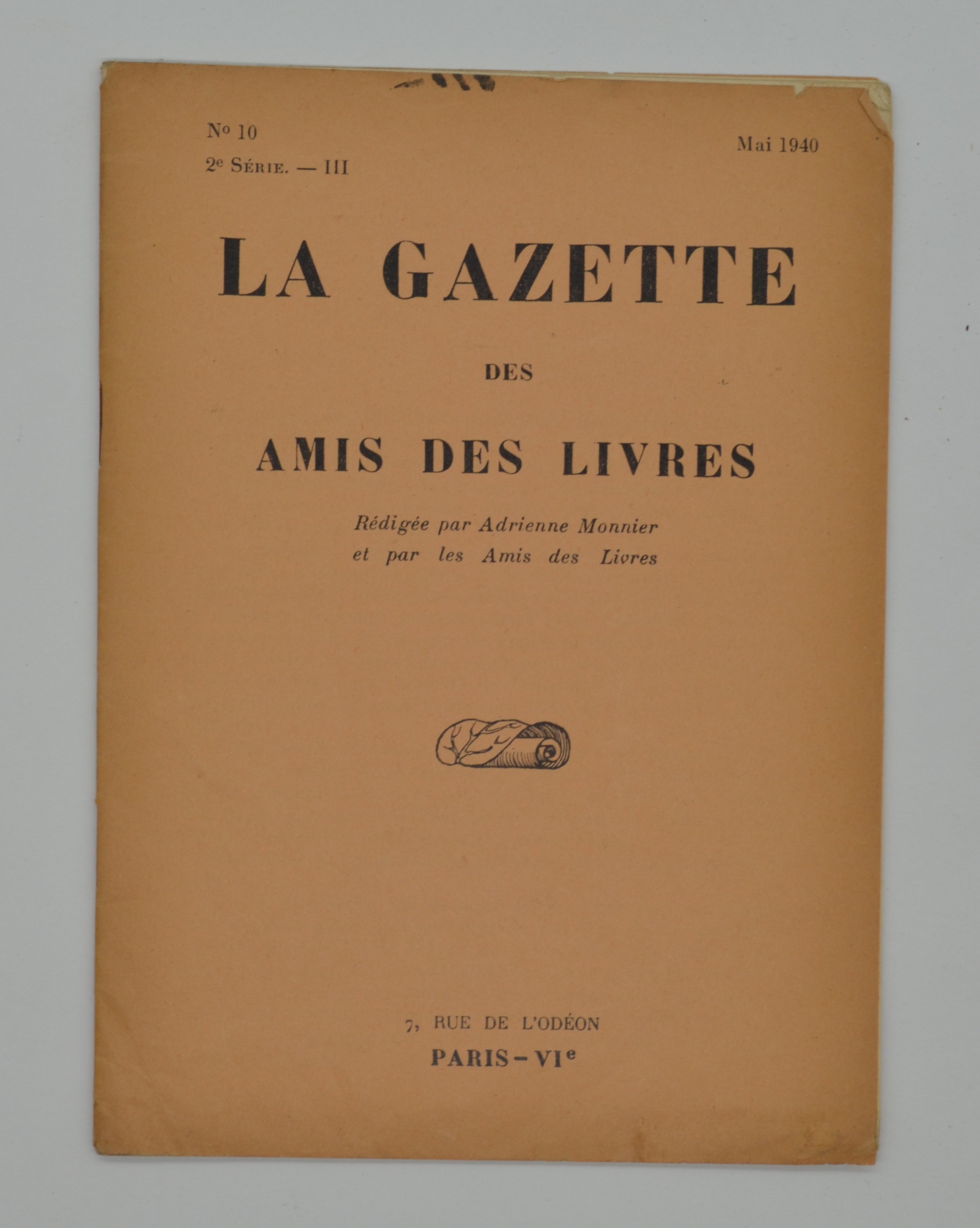[BENJAMIN] MONNIER, Adrienne. La Gazette des Amis des Livres. Rédigée par Adrienne Monnier et par les Amis des Livres
[BENJAMIN] MONNIER, Adrienne. La Gazette des Amis des Livres. Rédigée par Adrienne Monnier et par les Amis des Livres
Published: Paris, 1938—1940.
Description: ten issues in nine (including the double-issue for April 1939), most 20 x 14.2 cm. the last 18.5 x 13.4 cm, varying pagination, each in the original pinkish buff printed wrappers.
Condition: some discolouring, the thin paper of the wrappers with some creasing and marking, the spine of no. 7 splitting, a very attractive set.
A COMPLETE RUN, INCLUDING WALTER BENJAMIN’S LAST LIFETIME ESSAY
A superb set, comprising all ten issues of Monnier’s catalogue, her second major journal after the more famous Le Navire d’Argent of the 1920s. A most important inclusion is the final issue of May 1940, published in the shadow of the Nazi invasion, which includes both Monnier’s personal reflections on her publication of the French translation of Ulysses and the last essay published by Walter Benjamin in his lifetime, before his tragic death in Portbou over the border in Spain four months later.
Monnier set up her Maison des Amis des Livres at no. 7 rue de l’Odéon, in the Sixth, in 1915 and remained in business for well over 30 years. Her bookshop became one of the most famous salons in Paris, known for her support and publication of a whole raft of authors including Joyce, Bryher, Eliot and Saint-Exupéry, as well as being associated with all of the key figures of the literary world that clustered around Paris in the interwar years. The shop has been described as “un des lieux magiques de la vie littéraire parisienne des années vingt et trente” (Bertrand).
She is now most often mentioned in terms of her relationship with Sylvia Beach, whose famous Shakespeare et Cie. opened in 1919 with Monnier’s able support and encouragement: in 1921, when Beach moved to premises just across the road from the Maison des Amis des Livres at no. 12, the two became effectively twin stores, one chiefly servicing French speakers the other English, and sharing a clientele. The strength of their professional connection is best glimpsed in their support of Joyce’s Ulysses, Beach publishing the first edition (1922) and Monnier the first French translation (1929).
Benjamin, a lifelong bibliophile, had known Monnier since January 1930 and she became a firm friend and supporter throughout the decade, being one of those who petitioned successfully for his release from French internment at the end of November 1939. In May 1940 Monnier was still looking out for Benjamin – he is mentioned several times in her daily journal, along with Arthur Koestler, Siegfried Kracauer and Gisèle Freund – and he was still in Paris when the final issue of her Gazette with his essay finally appeared on 4 June, ten days before the Occupation. Monnier “cared immensely for Benjamin as a man and as a writer” (McDougall). Any of Benjamin’s original works from this phase of his life are of course very rare.
Complete sets of the Gazette are almost never seen, and the present set has a fascinating provenance. It was purchased from David R. Spivey, the book-dealer in Kansas City, Missouri, in 2008. The set had belonged to Jane Seymour van Meter, who worked with Sylvia Beach in Paris in the early 1930s; Beach later recalled that “the first and only really professional assistant I ever had was Miss Jane Van Meter, now Mrs. Charlton Hinman” (Shakespeare and Company). Although she spent most of her life at home in the United States, her ownership of this set makes perfect sense given her close connections with Beach and Monnier, and the fact that she always took a close professional interest in their work.
Jane Seymour Van Meter (1906—1992) was born in Denver, studied at Smith, the University of Colorado and the Sorbonne and married, in 1936, the Shakespearean scholar and inventor of his eponymous collator, Hinman. They moved to Lawrence, Kansas, in 1960 but divorced in 1966. Later in life van Meter had local fame as the “Blue Lady” of Lawrence, always dressed from head-to-toe in powder blue. Evidently quite eccentric, she became a familiar figure at the University of Kansas: one student who got to know her in the 1970s claimed that van Meter had said she divorced Hinman because “she was sick of living with Shakespeare.” One can only imagine. She is buried in Mt Calvary Cemetery in Lawrence her gravestone reading “scholar, friend, mother, and gentle person.” It is believed but can now no longer be confirmed that the bookseller Spivey acquired the set from the estate of Van Meter’s daughter Barbara, who died in Lawrence in 2002.
A full collation is available.
References: Beach, Shakespeare and Company (1959); Benstock, Women of the Left Bank (1986); Bertrand, ‘Adrienne Monnier et la Maison des Amis des Livres’ (1993); Brodersen, Walter Benjamin: A Biography (1996); Kotin, Wulfman & McCarthy, ‘Mapping Expatriate Paris’ (2016); McDougall, The Very Rich Hours of Adrienne Monnier (1976); Tiedemann & Schweppenhäuser, Walter Benjamin Gesammelte Schriften, VII.I (2006), no. 442; The University Daily Kansan (online), 1 December 2019..




